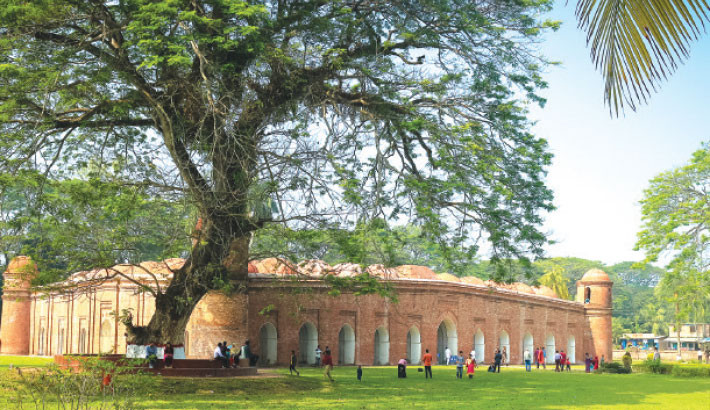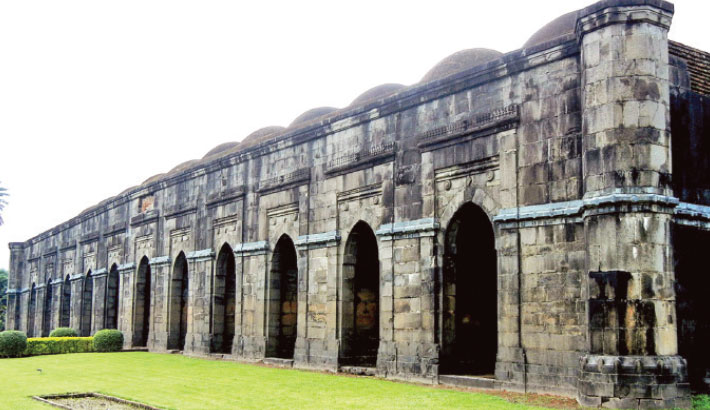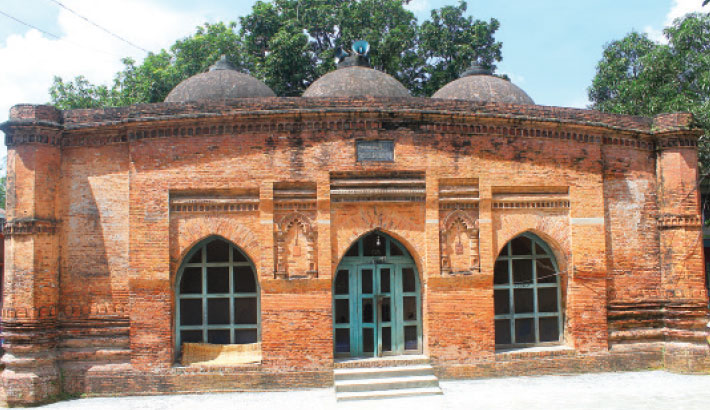Travelogue
Exploring Bangladesh’s Islamic Roots
A trip through time
Sarika Saiyara
Published: 24 Mar 2025

From the serene resorts to the historic mosques of Bagerhat, let each destination enrich your festive experience. Celebrate Eid by exploring the cultural tapestry of our nation.
Eid is not only a time of celebrations, but also a moment of reflection, gratitude and appreciation for our cultural heritage. Bangladesh’s culture has been influenced by Islam, Hinduism and Buddhism, with Islam having the most widespread and long-lasting impact on our thoughts, beliefs, and way of life. This Eid, let us take a journey back in time to explore significant mosques and shrines throughout the country.
Shat Gombuj Mosque
Shat Gombuj Mosque, also known as Sixty Dome Mosque, is the largest and most influential Islamic structure from the Bengali Sultanate period. Built in the 15th century by Khan Jahan Ali, this pre-Mughal monument in Bagerhat was declared as a World Heritage Site by UNESCO in 1985. The decoration of the mosque is mostly in terracotta and brick-setting. Although much of the ornamentation has already disappeared due to the ravages of time and neglect, enough of it still survives in the arches and interiors for us to marvel at. Despite its name, there are 77 domes over the main hall held up by exactly 60 stone pillars, creating an atmosphere of wonder.
Shrine (dargah) of Hajrat Shah Jalal
Islam was brought to this subcontinent through Sufi saints, among which Hazrat Shahjalal remains as one of the most renowned Sufi saints of Bangladesh. When Hazrat Shahjalal came to Sylhet in the fourteenth century, he brought spiritual knowledge and contributed to the expansion of Islam in the area. His shrine is presently the largest and most visited religious site in Bangladesh, attracting visitors for over 500 years.

Sona Masjid (Golden Mosque)
Another architectural wonder from the Bengal Sultanate era is the Sona Masjid, which is situated in Chapainawabganj. The mosque was constructed in the early 16th century by Sultan Alauddin Hussain Shah. An intricately decorated mosque, built with stone, with its fifteen gilded domes still amazes the visitors with its golden shining beauty, from which it gets its name.

Mosque of Baba Adam
Baba Adam Mosque is one of the best examples of pre-Mughal Islamic architecture in Bengal with its elaborate terracotta and stone decoration. It was named after Baba Adam, another renowned Sufi saint who had a significant role in the development of Islam in the area. Despite its small size, the graceful domed building remains an important site of worship and historical significance.
Tangail Atia Jame Mosque
The Atia Jame Mosque, nestled near Tangail, is a magnificent architecture of Islamic architecture from the Mughal era. This mosque, which was constructed in 1609 by Sayeed Khan Panni, a nobleman from Emperor Jahangir's court, features elaborate floral designs and beautiful clay work. It is a stunning edifice with its four corner towers, graceful domes, and intricate embellishments. The Atia Jame Mosque is a must-see site since it has maintained much of its original splendour, unlike most infrastructures hailing from that time period.
Binat Bibi Mosque
The Binat Bibi Mosque was established in 1456 and is the oldest mosque in Bangladesh. Constructed during the reign of Sultan Nasiruddin Mahmud Shah's reign, it is an extremely valuable piece of early Islamic architecture still standing in Dhaka, and it is named after its patron, Binat Bibi.
Bangladesh is home to some of the most beautiful and historically significant Islamic structures in South Asia. This Eid, as we celebrate with our loved ones, take the opportunity to reconnect with the country's rich Islamic heritage by visiting these breathtaking sites that shape our cultural and religious identities.

